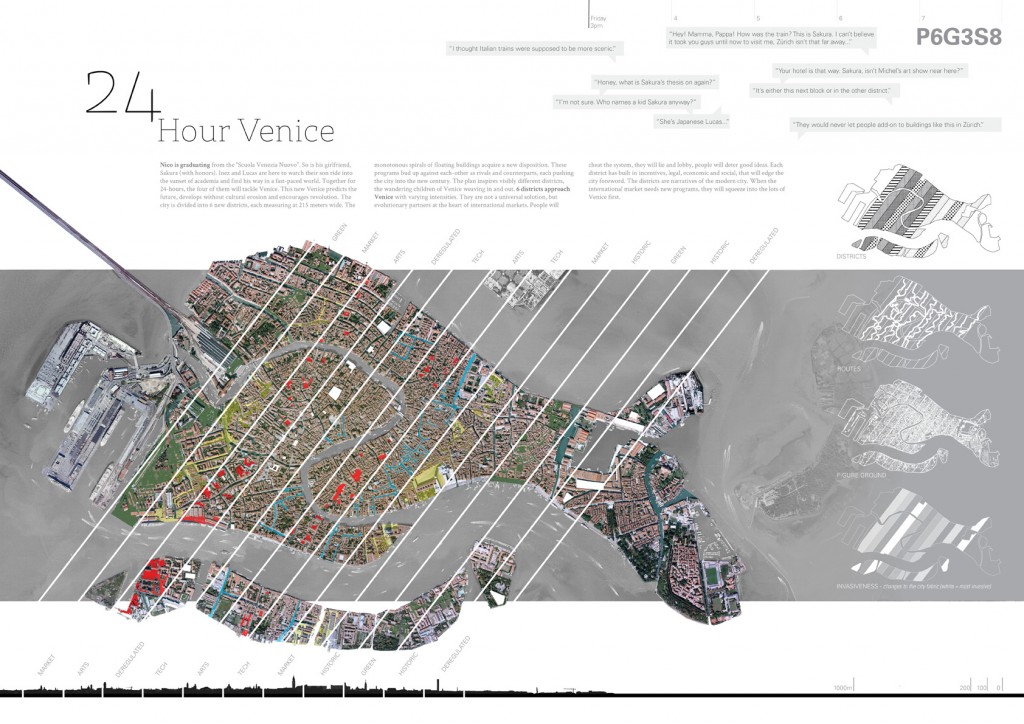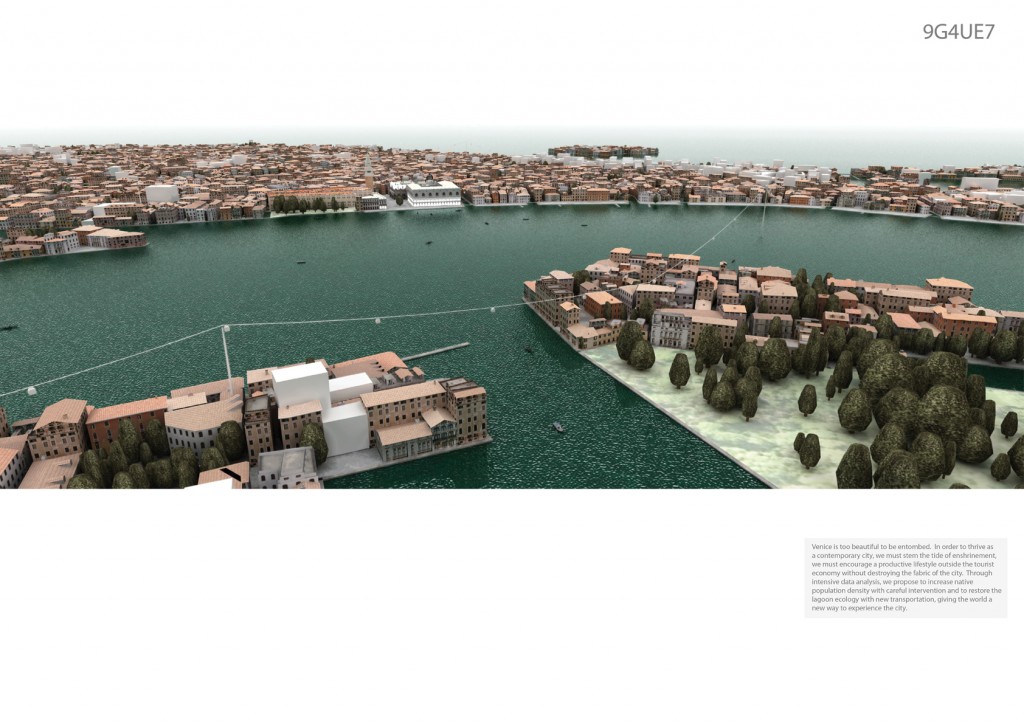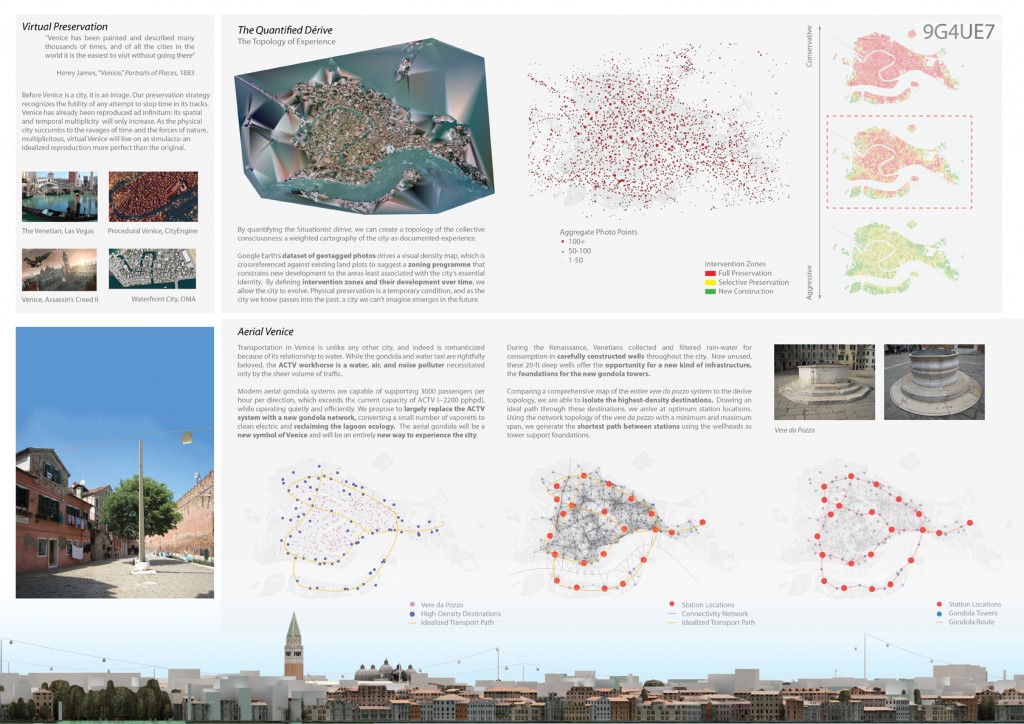Info:
Title: Venice is too beautiful to be entombed - Code: 9G4UE7Contest: Venice / 2011
By: M. Syp / E. Chakroff
Views: 3547 Likes: 0
Votes:
BJARKE INGELS7 NERI OXMAN4 ELENA MANFERDINI6 MARIA LUDOVICA TRAMONTIN5 BOSTJAN VUGA45.2
Venice is too beautiful to be entombed
In order to thrive as a contemporary city, we must stem the tide of enshrinement, we must encourage a productive lifestyle outside the tourist economy without destroying the fabric of the city. Through intensive data analysis, we propose to increase native population density with careful intervention and to restore the lagoon ecology with new transportation, giving the world a new way to experience the city.
Virtual Preservation
“Venice has been painted and described many thousands of times, and of all the cities in the world it is the easiest to visit without going there”
Henry James, “Venice,” Portraits of Places, 1883
Before Venice is a city, it is an image. Our preservation strategy recognizes the futility of any attempt to stop time in its tracks. Venice has already been reproduced ad infinitum: its spatial and temporal multiplicity will only increase. As the physical city succumbs to the ravages of time and the forces of nature, multiplicitous, virtual Venice will live on as simulacra: an idealized reproduction more perfect than the original.
The Quantified Derivé: The Topology of Experience
By quantifying the Situationist dérive, we can create a topology of the collective consciousness; a weighted cartography of the city-as-documented-experience.
Google Earth’s dataset of geotagged photos drives a visual density map, which is crossreferenced against existing land plots to suggest a zoning programme that constrains new development to the areas least associated with the city’s essential identity. By defining intervention zones and their development over time, we allow the city to evolve. Physical preservation is a temporary condition, and as the city we know passes into the past, a city we can’t imagine emerges in the future.
Transportation in Venice is unlike any other city, and indeed is romanticized because of its relationship to water. While the gondola and water taxi are rightfully beloved, the ACTV workhorse is a water, air, and noise polluter necessitated only by the sheer volume of traffic.
Modern aerial gondola systems are capable of supporting 3000 passengers per hour per direction, which exceeds the current capacity of ACTV (~2200 pphpd), while operating quietly and efficiently. We propose to largely replace the ACTV system with a new gondola network, converting a small number of vaporetti to clean electric and reclaiming the lagoon ecology. The aerial gondola will be a new symbol of Venice and will be an entirely new way to experience the city.
During the Renaissance, Venetians collected and filtered rain-water for consumption in carefully constructed wells throughout the city. Now unused, these 20-ft deep wells offer the opportunity for a new kind of infrastructure, the foundations for the new gondola towers.
Comparing a comprehensive map of the entire vere da pozzo system to the derive topology, we are able to isolate the highest-density destinations. Drawing an ideal path through these destinations, we arrive at optimum station locations. Using the network topology of the vere da pozzo with a minimum and maximum span, we generate the shortest path between stations using the wellheads as tower support foundations.
Info:
Title: Venice is too beautiful to be entombed
Time: 7 giugno 2011
Category: Venice
Views: 3547 Likes: 0
Tags: ACTV , Environment , Gondola , Grand Canal , Henry James , Renaissance , Venice , Water Resources








